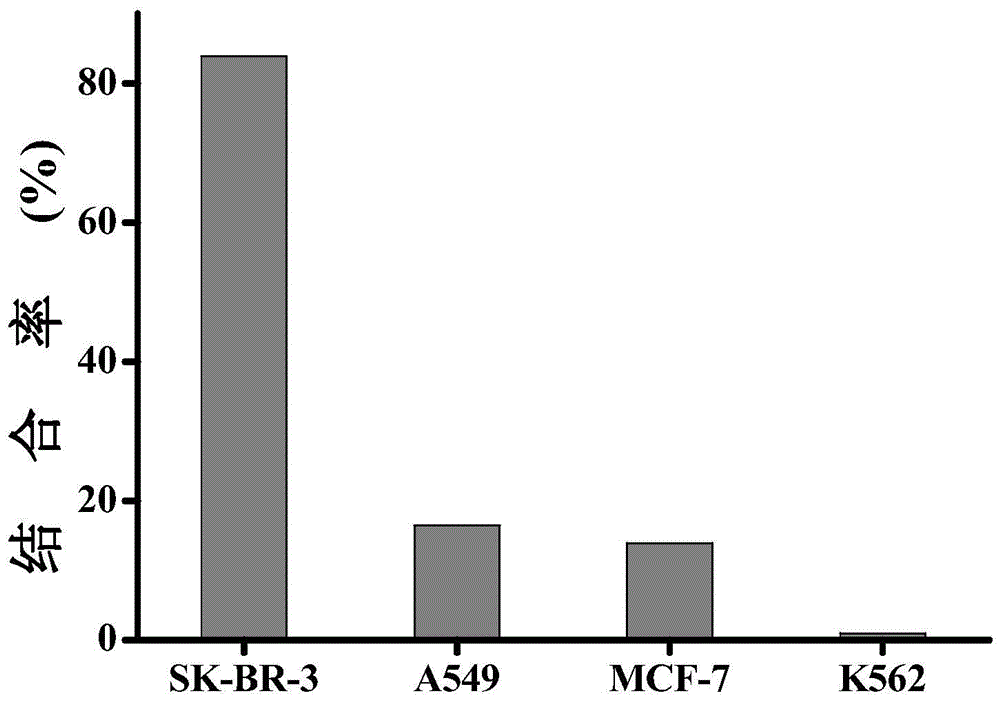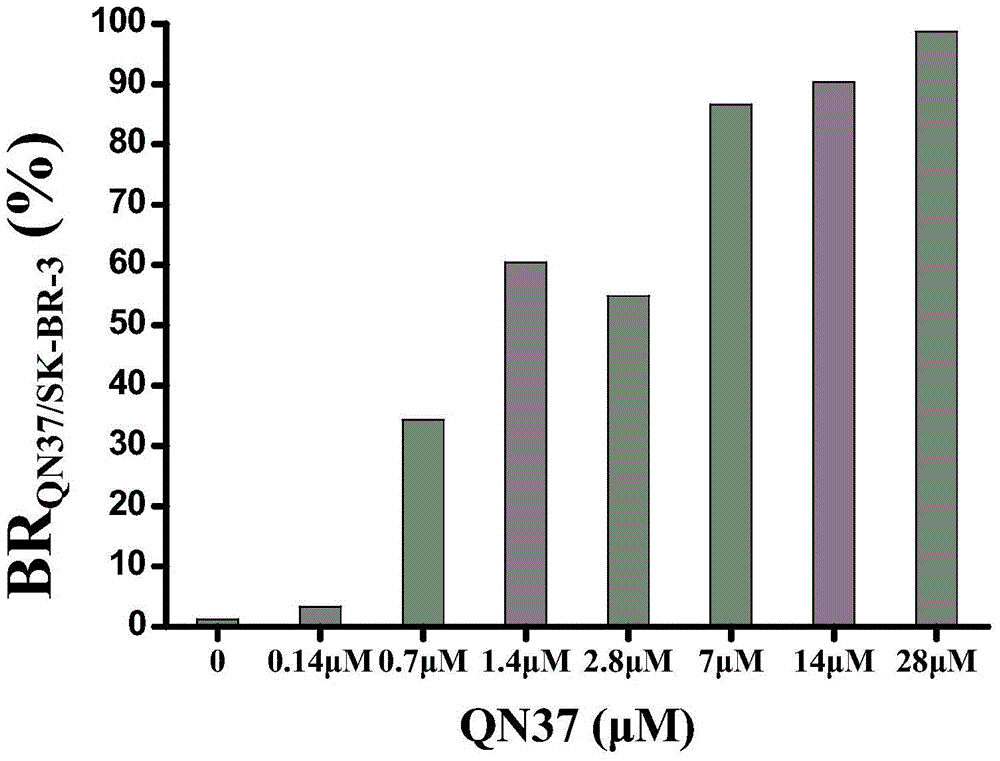Polypeptide-magnetic nanoparticles of circulating tumor cells with high expression of her2 and their preparation method and application
A magnetic nanoparticle and tumor cell technology, applied in the field of polypeptide-magnetic nanoparticle and its preparation, can solve problems affecting the health and life of patients, poor prognosis, etc., and achieve good reproducible results
- Summary
- Abstract
- Description
- Claims
- Application Information
AI Technical Summary
Problems solved by technology
Method used
Image
Examples
Embodiment 1
[0067] Example 1. Verification of polypeptide specific recognition of HER2
[0068] The polypeptide fragments used (synthesized by Shanghai Keyept Biotechnology Co., Ltd., with a purity of 98%) are shown in Table 1 below; magnetic nanoparticles: streptavidin-magnetic nanoparticles (Ademtech, 03121, France).
[0069] Table 1
[0070]
[0071]
[0072] SK-BR-3 cells were used as HER2-positive cells, and the combination rate of anti-HER2 and SK-BR-3 cells was used as a positive control. Flow cytometry was used to detect the three types of anti-HER2 and MCF-7, A549 and K562. cell binding rate. Based on this, the cell line with the lowest binding rate to anti-HER2 was searched for as the HER2-negative cell line.
[0073] The results of flow cytometry experiments were as follows: figure 1 As shown, the results showed that the binding rates of anti-HER2 to SK-BR-3, A549, MCF-7 and K562 were BR Anti / SK-BR-3 =83.87%, BR Anti / A549 = 16.44%, BR Anti / MCF-7 =13.91%, BR Anti / ...
Embodiment 2
[0074] Example 2 The flow cytometry method detects that the polypeptides have different effects on human HER2 positive and negative breast cancer cells. cell binding
[0075] The binding effect of the polypeptide of the present invention on HER2-positive cell lines and K562 cells is detected by flow cytometry method, and the specific method comprises the following steps:
[0076] (1) A series of FITC (fluorescein isothiocyanate)-peptide-biotin (Biotin) was designed and synthesized, and HER2-positive SK-BR-3 and HER2-negative K5620 cells were used as test objects. Flow cytometry and HER2-positive SK-BR-3 and HER2-negative K562 cells, GG40, QN37 and GG19 designed by the present invention can specifically bind to HER2-positive cells, but for HER2-negative cells, GG40 and QN37 show certain Negative binding properties, low selectivity; while the binding rate of GG19 to HER2 negative cell K562 is very low, high selectivity.
[0077] The detection process includes the following st...
Embodiment 3
[0102] Comparison of binding rates between polypeptides and HER2-positive breast cancer cells at different concentrations in Example 3
[0103] Taking polypeptide QN37 as an example, different concentrations of polypeptide QN37 are combined with HER2-positive breast cancer cells. The method specifically includes the following steps:
[0104] 1) The effect of the amount of designed peptide on the binding rate of designed peptide to SK-BR-3 cells
[0105] The concentration of antibody anti-HER2 is C anti-HER2 =52 μg / mL, the molecular weight is 150 kDa, the number of cells in the flow cytometry experiment is 106, and the antibody dosage is 0.01733 μM. The molecular weight of the antibody is relatively large, tens to a hundred times that of the designed polypeptide. Compared with antibodies, polypeptides have fewer amino acids, smaller molecular weights, smaller volumes, and greater spatial freedom. Therefore, when polypeptides interact with the cell surface, they are likely t...
PUM
| Property | Measurement | Unit |
|---|---|---|
| particle diameter | aaaaa | aaaaa |
| particle diameter | aaaaa | aaaaa |
Abstract
Description
Claims
Application Information
 Login to View More
Login to View More - R&D
- Intellectual Property
- Life Sciences
- Materials
- Tech Scout
- Unparalleled Data Quality
- Higher Quality Content
- 60% Fewer Hallucinations
Browse by: Latest US Patents, China's latest patents, Technical Efficacy Thesaurus, Application Domain, Technology Topic, Popular Technical Reports.
© 2025 PatSnap. All rights reserved.Legal|Privacy policy|Modern Slavery Act Transparency Statement|Sitemap|About US| Contact US: help@patsnap.com



